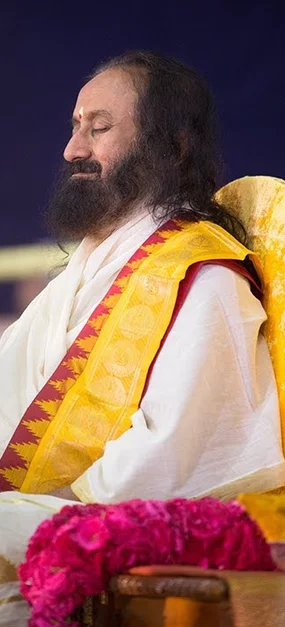What is Trikonasana?
The Sanskrit word “tri” means three and “kona” means corner or angle. Thus “three corner or three angle posture” is often called the triangle posture. This posture is also known as the “utthita trikona-asana”. “Utthita” means stretched or extended thus this is the Extended Triangle Pose.
Unlike most yoga postures, the Triangle Pose requires keeping the eyes open in order to maintain body balance.

How to do Trikonasana
- Stand straight. Separate your feet comfortably wide apart (about 31/2 to 4 feet).
- Turn your right foot out 90 degrees and left foot in by 15 degrees.
- Now align the center of your right heel with the center of your arch of left foot.
- Ensure that your feet are pressing the ground and the weight of your body is equally balanced on both the feet.
- Inhale deeply and as you exhale, bend your body to the right, downward from the hips, keeping the waist straight, allowing your left hand to come up in the air while your right hand comes down towards floor. Keep both arms in straight line.
- Rest your right hand on your shin, ankle, or the floor outside your right foot, whatever is possible without distorting the sides of the waist. Stretch your left arm toward the ceiling, in line with the tops of your shoulders. Keep your head in a neutral position or turn it to the left, eyes gazing softly at the left palm.
- Ascertain that your body is bent sideways and not backward or forward. Pelvis and chest are wide open.
- Stretch maximum and be steady. Keep taking in long deep breaths. With each exhalation, relax the body more and more. Just be with the body and the breath.
- As you inhale, come up, bring your arms down to your sides, and straighten your feet.
- Repeat the same on the other side.
Duration/Repetitions:
Remain in the forward bending position for the duration of the exhale breath. Do two or three repetitions (one repetition consists of bending forward on both sides).
Tikonasana Video
Trikonasana Benefits
The trikona-asana is an excellent posture to do early in your routine. The forward bending and lifting stimulates blood flow and helps to stretch and relax the back, shoulders, legs and arms as well as increases the flow of blood to the head. The muscles of the thighs and calves as well as the hamstrings are stretched. The slight twist of the spine creates suppleness in the spinal discs and relieves lower back discomforts.
The posture can be held longer by breathing gently through the nostrils rather than holding the breath. Another variation is to perform the trikona-asana rapidly thereby giving it a slightly aerobic effect.
Tips for practicing
- Make sure you have done a good warm up exercise of the whole body before you do the asana.
- While bending forward do it slowly and gently so as not to lose balance.
Preparatory poses
Follow up poses
Contraindications
Avoid doing this pose if you are suffering from migraine, diarrhea, low or high blood pressure, or neck and back injuries. Those with high blood pressure may do this pose but without raising their hand overhead, as this may further raise the blood pressure.
All Yoga Poses Previous yoga pose: Ardha Chakrasana Next yoga pose: VeerabhadrasanaFAQ’s on Trikonasana (Triangle Pose)
Disadvantages of Trikonasana: Avoid doing this pose if you are suffering from migraine, diarrhea, low or high blood pressure, or neck and back injuries. Those with high blood pressure may do this pose but without raising their hand overhead, as this may further raise the blood pressure
Contraindications of Trikonasana: Avoid doing this pose if you are suffering from migraine, diarrhea, low or high blood pressure, or neck and back injuries. Those with high blood pressure may do this pose but without raising their hand overhead, as this may further raise the blood pressure.

















